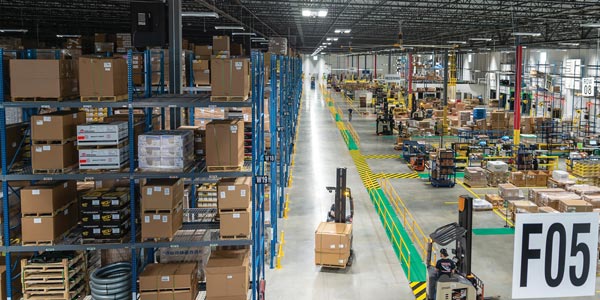Peer into the stock truck parts crystal ball where your historic service data swirls with tomorrow’s parts need driven by your drivers’ operational habits, parts suppliers’ distribution channels, and the once dreamed-of, now near-reality predictive maintenance algorithms. There are riches to be reaped if you can leverage the information already at your fingertips to shave off the costs associated with carrying too much stock or the more frightening monetary reality of not carrying enough.
As a fleet service manager, you’ve been walking the parts stock tightrope your entire career, and you do a great job. Tomorrow’s data-driven service solutions, however, can make you even better. The key to tomorrow’s success won’t necessarily be answering the question of what parts typically fail, but instead, why they fail.
“I would say that most fleets do a pretty good job of understanding the number of occurrences of a part failure,” said Tracy Royal, Daimler Trucks North America (DTNA)’s director of aftermarket supply chain. “The dealer and OEM understand what failed, but collectively we don’t always find the root cause of the issue and there is always the possibility that the wrong diagnosis was made and the wrong part was changed out. There are many events surrounding a part failure and a person in the value chain may have one perspective of what the root cause is but not a collective answer.”
The key will be collaboration between the other service locations in your fleet, any third-party service providers you utilize and OEMs.
“As fleets tie service and stock data together as an indicator, the real power will be to put this data together with other data that may reside at the OEM or at the dealer to develop a preventive solution,” Royal said.
RELATED: Picking the right partner: OEM, Supplier channels
“Road Choice is able to determine failure rates based on a host of criteria and we are more than happy to share this information with our customers,” said Todd Shakespeare, director of parts marketing for Mack and Volvo Trucks. “The use of telematics on today’s vehicles is a great supplier of information as well.”
Clearly, connectivity is a theme, but let’s walk before we run. To make sure the data you collect matches up with the data that your parts solution partner needs is the first step toward a connected inventory future. So how do you start?
Shakespeare offered an idea: “Bar coding parts and tying them to a repair order is a good start.”

Also remember: The ATA Technology and Maintenance Council (TMC)’s Vehicle Maintenance Report Standards (VMRS) is your friend. The system is set up so that no matter what terminology is used by each party involved in the service, they will all be able to be universally translated, so to speak, into VMRS. Examples include: Code 1: Equipment Location; Code 2: Equipment Category; and Code 14: Reason for Repair, to name a few.
Let’s hone in on Code 14. You can use that as your basic building block for capturing data related to failure modes, which is critical information to capture.
“Different fleets have different operating environments,” said Eaton Director of Aftermarket Product Strategy Corneliu Bogdan, “therefore the failure modes tend to be application-specific. Understanding trends and fleet-specific issues will expedite troubleshooting and diagnostics, as well as increase the ease of communication with suppliers and OEMs.”
“The service manager needs to capture what actually went wrong and record it,” DTNA’s Royal stressed. “We have done analysis of parts information, and we find inaccurate, missing or mis-keyed data. We encourage them to record accurately the details of the service event even if they feel it may not be used.”
All of this begs the question: Record the info where? Talking data, recording it in a digital service management system that integrates into other parts of your fleet’s operation would be ideal. If you’re not there yet, make sure you’re getting accurate notes from your technicians even if that means handwritten in the case of paper repair orders and then get that info into your software system ASAP. If you let it sit around or only key it in once a week or once a month, you could potentially lose the note’s meaning. (How many sticky notes do you have scattered around your desk that you don’t understand anymore?)
RELATED: Good, better, best parts—finding what fits your needs
“The tools available today are incredibly powerful and can manage a shops inventory very well,” Mack and Volvo’s Shakespeare said. “I recommend that you implement a quality fleet management system with an inventory management module.
“This won’t be a ‘set it and forget it’ though,” he clarified. “The service department must work with the system when changes occur, for example, when adding new vehicles, changing suppliers, etc.”
Let’s bring it back home to the beginning—the goal in collecting this data is to give you a bird’s eye view of your historic service operation. You’ll be able to see trends in the service your shop performed that can inform your parts inventory planning going into next year.
“Understanding the relation between the age of the vehicle, maintenance intervals and historical failure modes is a great indicator of expected repair requirements,” Eaton’s Bogdan said. “Forecasting these future repairs and aligning on hand inventory to service these needs is an efficient way to minimize down time and increase shop output.”
The key to service data analysis is to use it as a guide. It’s not a replacement for your parts inventory instincts. Leverage the data insight, but still trust your gut.
“Don’t make decisions based on anomalies,” DTNA’s Royal recommended. Focus on evaluating factual, proven service trends. “Erratic decisions based on exceptions can have negative implications. Stocking up on a year’s worth of inventory because of one truck down situation is an example. Instead, utilizing proven inventory management system that takes into account trends overtime including regional and national demand is important.”













